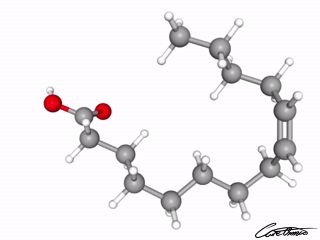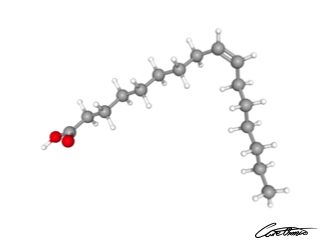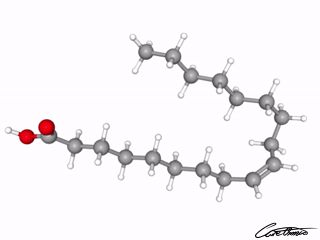Monounsaturated Omega Fatty Acids: How To Use Them For Your Benefit
The most well-known omega fatty acids are omega 3 and omega 6, which are polyunsaturated. But four different omegas belong to monounsaturated fatty acids. They are Omega 5, 7, 9, and 11.
These relatively unknown omega fatty acids are containing several health benefits and needs for our overall health.
Tip! Use the "Show Expanded TOC" button if you want to jump straight to a specific monounsaturated omega fatty acid article.
Table of Contents
Our Articles About Omega 5 Monounsaturated Fatty Acids
Omega 5 fatty acids consist of several fatty acids found primarily in the seeds of plants. These fatty acids have been considered a powerful antioxidant.
Examples of good sources of omega 5 are pomegranate seed oil, full-fat grass-fed dairy products, coconut oil, and salmon.
Myristoleic acid (14:1) is bad for LDL, but good for the heart

Myristoleic acid is not that common. Find out more about myristoleic acid in What Is Myristoleic Acid (14:1) & What Foods Can I Find It In?
It might raise LDL cholesterol but has also shown positive results in aiding cardiovascular health. Check out myristoleic acid's potential benefits and side-effects in Myristoleic Acid (14:1): 2 Research-Backed Benefits & 2 Side-Effects
Our Articles About Omega 7 Monounsaturated Fatty Acids
Omega 7 fatty acids are monounsaturated and nonessential fatty acids. Meaning we don't need to consume them in our daily diet.
You can find Omega 7 in the oil extracted from fish. Many studies suggest that this oil is good for heart health.
Other good sources than oil are macadamia nuts, grass-fed meat and dairy, avocado, and salmon.
Vaccenic acid (18:1t n-7) (18:1-11 t) is unknown in regards of health
Vaccenic acid can be found in ruminant fat. You can find more information about vaccenic acid in What Is Vaccenic Acid (18:1t n-7) & What Foods Can I Find It In?.
Vaccenic acid has been discovered in the brain of patients with bipolar disorder and schizophrenia. But research on how this fatty acid connects to human health is lacking.
Palmitoleic acid (16:1) for your health and your weight

Palmitoleic acid is a useful fatty acid in medicine. See more about palmitoleic acid in What Is Palmitoleic Acid (16:1) & What Foods Can I Find It In?
Palmitoleic acid has many believed health benefits. For instance, is it recommended by health professionals for reducing the risk of cardiovascular diseases, and managing body weight.
Check out all the benefits palmitoleic acid possesses in Palmitoleic Acid (16:1): 8 Research-Backed Benefits
Paullinic acid (20:1) a liquid in fats and oils
Paullinic acid exists as a liquid and is a component of fats and oils.
Find more information about paullinic acid in What Is Paullinic Acid (20:1) & What Foods Can I Find It In?.
Our Articles About Omega 9 Monounsaturated Fatty Acids
Omega-9 fatty acids exist in various animal and vegetable sources, like olive oil, macadamia nuts, seeds,and salmon.
Monounsaturated omega 9, can be synthesized in the body. It makes them nonessential fatty acids.
Erucic acid (22:1 n-9) is a contaminant
Erucic acid classifies as a contaminant found in vegetable oil. Learn about this acid in What Is Omega 9, Erucic Acid (22:1 n-9) & What Foods Can I Find It In?.
It poses a long-term health risk, especially for children. Check it out and the other side-effects this acid has in Erucic Acid (22:1 n-9): 5 Research-Backed Side-Effects .
Oleic acid (18:1 n-9) for cancer prevention

Oleic acid is common in our daily diet. Find more information about oleic acid in What Is Oleic Acid (18:1) & What Foods Can I Find It In?
Oleic acid plays a role in cancer prevention. But it is not entirely clear how. See other benefits this acid has in Oleic Acid (18:1): 3 Research-Backed Benefits
Our Articles About Omega 11 Monounsaturated Fatty Acids
Omega 11 fatty acids are almost unknown. Not many have heard about the benefits of omega 11.
Many fish oils contain omega-11 long-chain monounsaturated fatty acids. These fish oils have shown several beneficial effects on cardiovascular health, such as LDL and HDL levels.
Cetoleic acid (22:1 n-11) helps ALA transition
Cetoleic acid is an important fatty acid. In the body, it stimulates the transition of ALA to the vital acids EPA and DHA.
You can find more information about cetoleic acid in What Is Cetoleic Acid (22:1 n-11)?.
